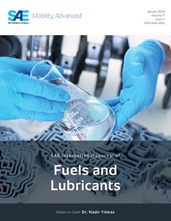Vehicular ammonia emissions are currently unregulated, even though ammonia is harmful for a variety of reasons, and the gas is classed as toxic. Ammonia emissions represent a serious threat to air quality, particularly in urban settings; an ammonia emissions limit may be introduced in future legislation. Production of ammonia within the cylinder has long been known to be very limited. However, having reached its light-off temperature, a three-way catalyst can produce substantial quantities of ammonia through various reaction pathways. Production of ammonia is symptomatic of overly reducing conditions within the three-way catalyst (TWC), and depends somewhat upon the particular precious metals used. Emission is markedly higher during periods where demand for engine power is higher, when the engine will be operating under open-loop conditions. The air-to-fuel ratio, cylinder temperature and rate of availability of carbon monoxide and nitrogen monoxide all correlate to varying degrees with ammonia production. In addition to a literature review, this study presents ammonia emissions data from three European passenger cars, using three different fuels, with varying physicochemical characteristics and carbon:hydrogen ratios, namely gasoline, LPG and CNG. All vehicles were tested on BOSMAL's chassis dynamometer over the New European Driving Cycle, with undiluted ammonia quantified directly at tailpipe. Both cycle mean emission factors and second-by-second data are presented. The results indicate a degree of correlation between ammonia emission and demand for engine power, for example upon commencing acceleration and following gear shifts. Emission over the entire driving cycle was found to vary depending on the fuel used, and between the three vehicles used in this study. One vehicle emitted 93 % more ammonia when operating on gasoline than on CNG; the other vehicle emitted 2 % more ammonia when running on LPG than on gasoline. A simple numerical correction implied that the lower carbon:hydrogen ratio was at least partially responsible for the minimal ammonia emissions observed when running on this fuel.
